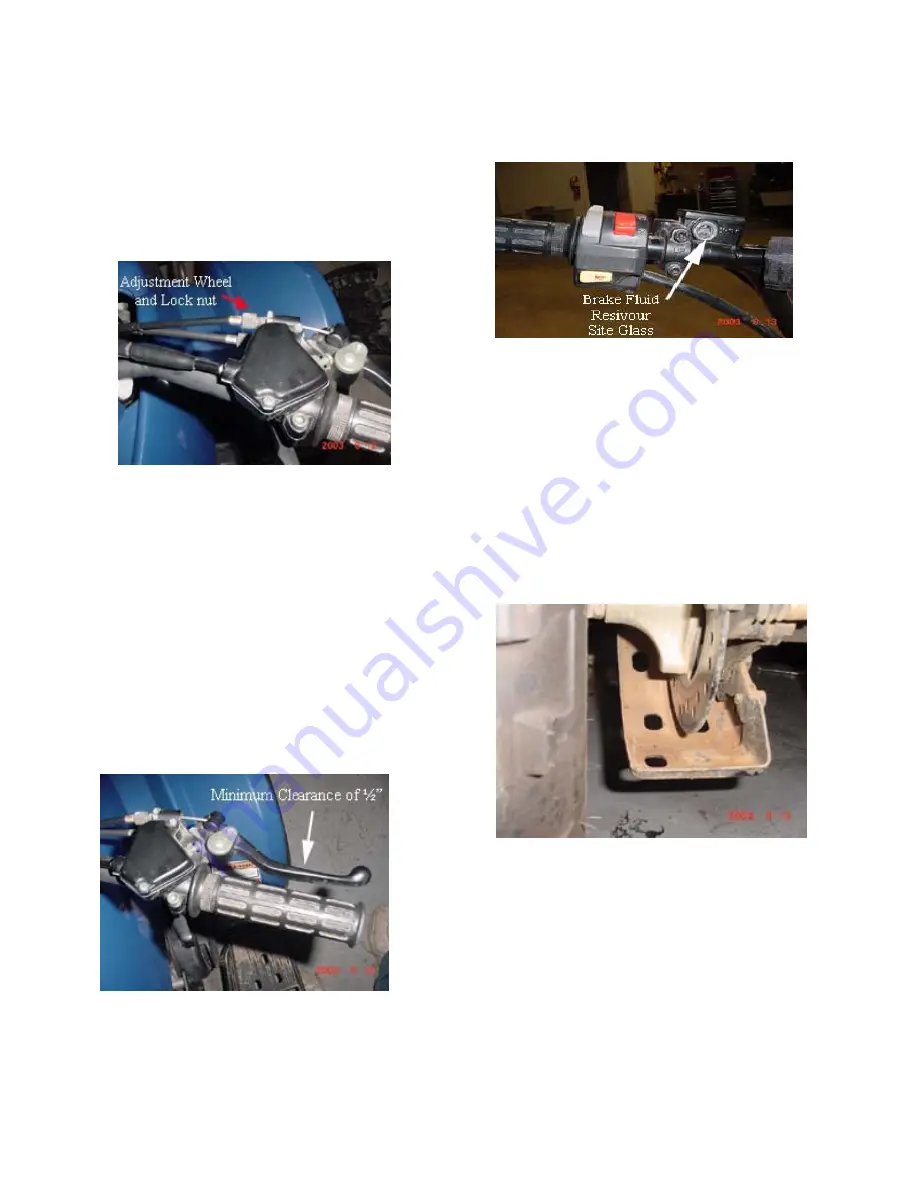
Page 14
wheel rotates while the brakes are applied,
adjust the brake cable until the wheels no
longer rotate.
(See Brake Adjustment)
Brake Adjustment
Adjust the brake cable so that the lever has
zero free play and a minimum clearance of ½”
between the lever and the handle grip when the
brake is fully applied. Adjust the cable by using
the adjustment wheel where the cable attaches
to the lever assembly. After obtaining the
correct adjustment, insure that the locking nut is
tightened securely against the adjusting wheel
to prevent the adjustment wheel from turning
due to vibration. Keep your brake cables
lubricated with a high quality cable lubricant to
prevent rust and corrosion. The cables should
be lubricated every 60 days or more often if
operated in a dusty or wet environment.
Replacement of the brake shoes and cables
should ONLY be preformed by a qualified
mechanic.
Rear Brake System Inspection
Visually inspect the brake hose for any signs of wear
or leaks. Check the fluid level in the fluid reservoir by
checking the site glass for the level.
The fluid level should fill at least ¾ of site glass
when the unit is setting on a level surface.
Test the brakes by applying pressure to the brake
lever and trying to push the unit forward. If the wheel
rotates while the brakes are applied, check your fluid
level and brake pads. If the brake lever feels spongy
or does not stop when squeezed, you may have air
in the lines. All air must be purged from the brake
lines for the disc brake to operate properly. (See
purging brake lines).
After riding your unit, be sure to clean any build up
of mud, sand and dirt from the brake rotor skid plate.
This will protect the rotor disc from rust and
corrosion.
To Fill the Reservoir
Remove the reservoir cover by removing the two
cover bolts.
www.Get2itParts.com
www.Get2itParts.com
www.Get2itParts.com






























